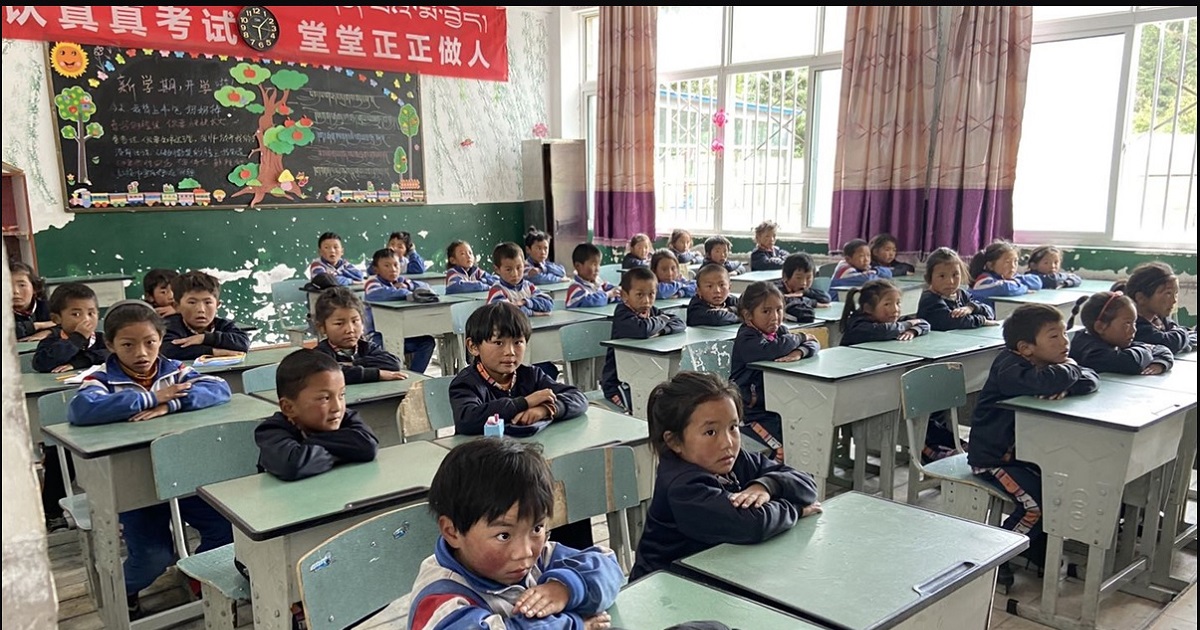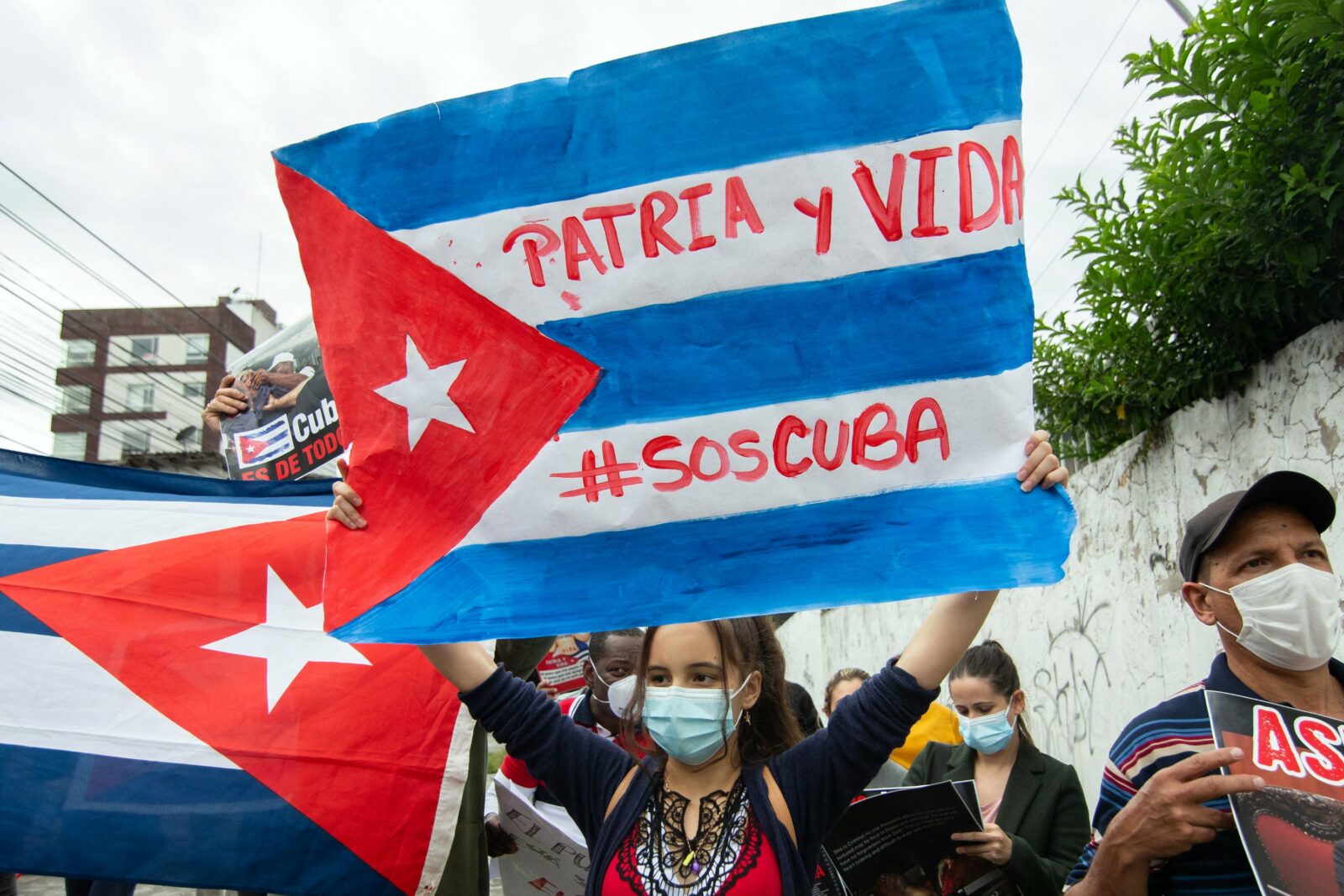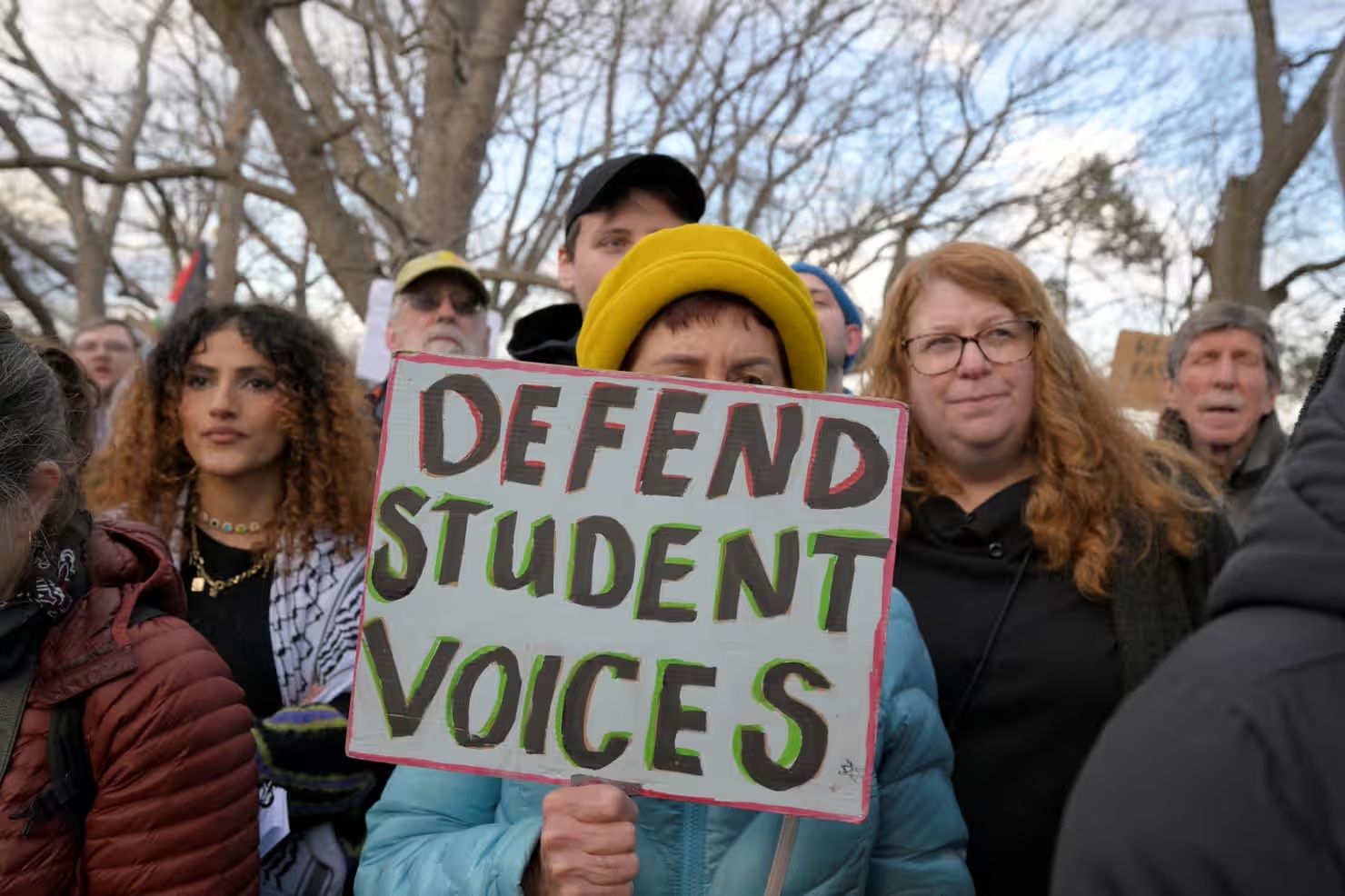Will Gronefeld, Associate Member, Immigration and Human Rights Law Review

I. Introduction
Education is an essential human right recognized throughout the world.[1] Not only is education a cornerstone for the personal development of students to become competent and responsible individuals, but it also serves greater societal aims of individual countries.[2] Education is critical in Tibet, as it allows traditional Tibetan culture to survive.[3] However, Chinese authorities have historically sought to suppress Tibetans’ basic rights.[4] Now, China’s efforts are aimed at Tibetans’ education.[5] These efforts include detaining and forcibly “disappearing” prominent Tibetan educators, shutting down private schools, erasing the education of Tibetan history and culture, and subjecting children to political education and Chinese military training.[6]
China’s policies regarding Tibetan schools and education only serve to erase Tibetan culture and indoctrinate Tibetan children, violating both domestic and international law. Part II of this blog provides background on China’s erasure of Tibet’s culture, beginning with China’s annexation of Tibet in 1951. Part III discusses how China’s actions violate its obligations under both domestic and international law. Finally, Part IV examines potential avenues to reform and rebuild the lost education and culture of Tibet.
II. Background
Like most countries and regions, education plays an essential role in Tibet by preserving its culture and language.[7] However, after the absorption of semi-autonomous Tibet into China’s control, education changed from teaching to assimilation.[8] China started this assimilation of Tibet by shutting down schools and removing prominent educators.[9] Now, China has shifted to an overt approach, as it erases the teaching of the Tibetan language and indoctrinates children through highly politicized and military-style education.[10]
A. Role of Tibetan Culture and Education
Education has played a unique and important role in Tibet’s history and culture.[11] Monasteries served as key components of Tibet’s national identity.[12] Not only did monasteries serve as religious centers, but they were also centers of learning the Tibetan language and culture.[13] Within the monasteries, Tibetans could learn music, painting, embroidery, and sculpture.[14] Monasteries also served as repositories for art, literature, and traditions.[15] Whether formally in schools or informally through monasteries, culture in Tibet has been instilled through education.
Conversely, China’s early education system was similarly situated towards instilling cultural values, but those values viewed education as a pathway toward enhancing one’s worth and career.[16] Language is also essential in Chinese education, not only as a method for preserving Chinese culture, but for developing political thought and effective governing.[17] These importances did not change as the Chinese government switched to communist control.[18] As the Chinese Communist Party (CCP) took control, it set its sights on assimilating the Tibetan people due to longstanding beliefs of the area being a strategic location.[19]
B. China’s Assimilation of Tibet
China’s annexation of Tibet was formalized under a document entitled “Seventeen Point Agreement of the Central People’s Government and the Local Government of Tibet on Measures for the Peaceful Liberation of Tibet” (“Seventeen Point Agreement”).[20] Enacted in 1951, the Seventeen Point Agreement legitimatized China’s claim over Tibet.[21] Additionally, it preserved rights and autonomy for Tibet, such as those of religion, culture, and traditional institutions.[22] Since China annexed Tibet, the government has continually attempted to assimilate Tibetans into Chinese culture and rid Tibet of its culture.[23]
C. Assimilation of Tibetan Children in Schools
Although China has attempted to assimilate Tibet since the Seventeen Point Agreement in [insert year], its efforts to do so ramped up in the 2010s.[24] In 2010, China introduced a new “Bilingual Education” policy for all schools in minority areas, including Tibet.[25] Since 1960, Chinese has been the language of instruction in nearly all high schools and middle schools in the Tibet Autonomous Region, where about half of Tibetans live.[26] However, the “Bilingual Education” policy sought to completely replace the Tibetan language with Chinese.[27] This policy’s official purpose was to promote both the Tibetan and Chinese languages equally, but its vague wording led to Chinese authorities using this policy to further erase Tibetan culture.[28] For example, a report by China’s official state news agency, Xinhua, stated, “Tibet classes in the interior adopt a teaching model that uses Chinese as the teaching language with Tibetan as an addition.”[29] Another state-run publication, The Global Times, reported that schools were increasingly using Putonghua (standard Chinese) as the language of instruction in all classes, except those where the Tibetan language was the subject of the class.[30] As a result of the “Bilingual Education” policy, ninety-five percent of school books and reading materials in Tibet are written in Chinese, with only five percent in Tibetan.[31] Furthermore, Tibetan teachers have been sent for training to become fluent in Chinese, and some have been fired and replaced by Chinese teachers.[32]
In August 2020, Chinese President Xi Jinping announced efforts to rebuild Tibet as a modern socialist society with Chinese characteristics.[33] In practice, this meant doubling efforts to replace or suppress the Tibetan language.[34] For example, Tibetan would now be subordinate to Chinese on all public signs.[35] Additionally, public campaigns rallied for Tibetans to speak Chinese to “raise population quality.”[36]
The renewed efforts reached their apex on May 21, 2021, when China released a “white paper,” or policy document, entitled “Tibet’s Peaceful Liberation, Prosperity and Development.”[37] This document outlined proposals for future legislation that emphasized their aims of further assimilating Tibet, proclaiming that Tibetans now live better lives under China’s rule.[38] The paper also denounced Western “anti-China” forces interfering in Tibet as a means of disrupting China, while simultaneously accusing the fourteenth Dalai Lama and his team of provoking incidents that jeopardize peace and stability in Tibet.[39] Following the white paper’s release, restrictions on Tibetans worsened further, especially as Chinese officials continue to target Tibetan schools.[40]
D. China’s Removal of Tibetan Schools and Educators
In July 2024, China shut down the Jigme Gyaltsen Nationalities Vocational School, a prestigious Tibetan private school that operated for three decades.[41] The closure occurred despite the school operating with official approval from Chinese authorities.[42] Since 2021, at least five other vocational schools have been shut down without specific reasoning from the government.[43] In addition to closing established Tibetan private schools without valid reasoning, the Chinese government has sought to prosecute prominent Tibetan leaders and educators.[44]
Chinese authorities have forcibly disappeared, and even killed, Tibetan leaders.[45] For example, in December 2024, a high lama named Humkar Dorje Rinpoche had been missing for a month, presumably forcibly disappeared into police custody.[46] Locals feared for his safety due to a similar incident earlier that year.[47] In May 2024, Chinese authorities wrongfully detained and tortured over 20 Tibetan educators.[48] One of the prisoners, Gonpo Namgypal, was released from torture after falling ill, but died three days later.[49] During the preparation of his body for cremation, many of his internal organs were discovered to be burned from electric torture.[50] This inhumane dismantling of Tibetan culture through shutting down schools and “disappearing” educators serves China’s aims of establishing their own schools to indoctrinate Tibetan children.[51]
In addition to decimating existing schools, China has created two types of schools to further diminish and cleanse Tibetan culture.[52] During the traditional school year, China has created “Colonial Boarding Schools.”[53] Estimates place around 800,000 to 900,000 Tibetan children aged six to eighteen enrolled in these schools.[54] These schools not only separate Tibetan children from their families during the school year, but also subject them to highly politicized education meant to erase their culture and identities.[55]
The second type of school is a military education camp.[56] During summer vacation, Tibetan children are forced to attend “military education” programs set up by the CCP.[57] These camps force Tibetans to undergo intensive indoctrination by Chinese Army veterans.[58] Children as young as six have been seen wearing marching fatigues while raising the Chinese flag, participating in air raid drills, and engaging in military training.[59] Chinese state media outlets have celebrated the success of these camps, stating that more than “300 Tibetans have applied to be future military service volunteers.”[60]
Since 1951, China has continuously indoctrinated Tibetans and suppressed their language and culture. Within the twenty-first century, China’s efforts have zeroed in on Tibetan education, through school closures, disappearances of educators, and the creation of new, intense Chinese school systems. These continual efforts by China violate Tibetans’ human rights, domestic law, and international obligations.
III. Discussion
China’s treatment of Tibet violates its obligations to preserve the autonomy of the minority cultures under its jurisdiction.[61] International law provides further obligations for Chinese authorities not to interfere with Tibetan education and culture.[62] However, China’s actions against Tibet have only worsened, despite admonishment by the U.N.[63] The avenues for reform are limited, especially as China continues to ignore the U.N.’s warnings and punishes anyone who dares to speak out.[64]
A. Domestic Law Violations
China’s efforts to assimilate Tibet’s culture and language violate several of its domestic laws governing the autonomy of Tibetans to educate themselves. First, China’s 2001 Law on Regional Autonomy contains several provisions about the preservation of the autonomy of languages within schools.[65] Article 37 of the Law on Regional Autonomy specifies that, “schools where most of the students come from minority nationalities should, whenever possible, use textbooks in their languages and use these languages as the medium of instruction.”[66] China violates Article 37 by imposing Chinese as the first and only language for Tibetan children, while establishing that Tibetan, and by extension, the Tibetan culture, is backwards, inferior, and in need of change.[67]
Secondly, China’s actions violate the Seventeen Point Agreement. Specifically, Article 9 states that, “the spoken and written language and school education of the Tibetan nationality will be developed step by step per the actual conditions in Tibet.”[68] The issue with Article 9 is that China itself determines the actual conditions in Tibet. [69] China determines whether Tibetan leaders present a “danger,” whether children require a different style of learning, and whether schools should be shut down. [70]China’s shutting down of schools is proof of this self-imposed power. China permitted many of these schools to continue to operate yet has revoked that permission without giving any reason.[71] The Seventeen Point Agreement recognizes the importance of these schools, but China’s actions treat them as if they are merely optional or unnecessary. The purpose of the agreement is to preserve the unique culture of Tibet, yet China not only shuts down the schools but also closes off any potential avenues to education by forcibly disappearing any leaders and educators. These actions not only violate China’s own obligations, but also international obligations as well.
B. International Law Violations
Article 27 of the International Covenant on Civil and Political Rights (ICCPR), signed but not ratified by China, expresses that minorities shall not be denied the right to use their language or enjoy their own culture.[72] China has violated both protected rights, as they have erased Tibet’s culture and native language while cultivating a culture of fear and blind obedience.[73] Tibetans are not being educated about Chinese or Tibetan culture in any meaningful sense; rather, they are being used as tools to further the Chinese authorities’ goal of erasing Tibet’s culture and language. Language is more than just a tool for communication, but a means for cultures to survive, for people to come together, for traditions and values to be preserved.[74] The Chinese government is fully aware of how important language and longstanding protections for culture and languages are; however, China continually works tirelessly to circumvent those protections.[75] The ICCPR is not binding on China, but China has recognized the importance of the agreement by signing it. Furthermore, China has recognized the protections outlined in the ICCPR,
International law provides further obligations on China to refrain from interference with Tibetan-language instruction.[76] The U.N.’s Convention on the Rights of the Child, ratified by China in 1992, holds that children belonging to a minority shall not be denied the right to “use his or her language.”[77] China claims that there are no violations, as Tibetan schools are technically bilingual. However, Putonghua is used as the language of instruction in most cases, with Tibetan being limited.[78] Tibetan leaders are not the only individuals subjected to abuse for the “crime” of making their culture more than an afterthought.[79] Chinese authorities have no qualms about detaining or even harming Tibetan children who speak up about their wrongdoings.[80] For example, a teenager named Jigme Dolma was severely beaten after calling for the return of the Dalai Lama and peace in Tibet.[81] In 2008, another teenager, Lhundup Tso, was among 13 people killed when Chinese security forces shot into a peaceful protest in Tibet.[82] Although the U.N. demanded a full inquiry into the shooting, it never happened.[83] China’s actions against Tibetan children not only violate the Convention on the Rights of the Child but also go against the baseline standard of human rights. Children are being treated as objects to perpetuate the aims of the Chinese government, and anyone who dares to speak out is swept away, including the children they claim to protect.
C. Reform
China’s violations are clear, but reform is limited due to China’s immense power, as shown by China’s lack of response to any inquiries. In addition to attempted inquiries, the U.N. has tried other avenues to curtail China’s actions. In January 2023, four U.N. Special Rapporteurs—Minority Issues, Field of Cultural Rights, Right to Education, and Freedom of Religion or Belief—stated serious concern over China’s language and education policies in Tibet.[84] This statement recognized China’s efforts to completely absorb Tibet into its culture, including the assimilation of Tibet through China’s series of oppressive actions.[85] China still has not responded.[86] This is not a surprise, especially as China has a long history of human rights violations, not just against Tibetans, but also Uyghurs and Turkic Muslims.[87] Chinese authorities have done everything to prevent reform for the crisis in Tibet—from indoctrinating children, to shutting down places of religious significance; from offering rewards for citizens willing to inform on others, to banning access to information; and from detaining anyone who dare to speak out, to harming or even killing those who do.[88] China’s power and subsequent non-adhesion to domestic and international obligations make it extremely difficult to effectuate actual change in Tibet, but international sanctions such as trade embargos and punishment will force China to enact actual, meaningful reform.
IV. Conclusion
China has intensified its efforts to erase Tibet’s culture through the usurpation of education.[89] Education has a long-standing history in Tibet as an important means to impart culture and build community.[90] China has recognized the essential role of education in Tibet’s culture and has shut down long-standing schools while forcibly detaining and “disappearing” prominent Tibetan educators.[91] Instead of an education, Tibetan children are becoming indoctrinated as tools of the Chinese government.[92] These actions violate China’s domestic obligations to preserve Tibet’s culture, language, and overall autonomy.[93] The U.N. has recognized and denounced China’s actions, but change seems unlikely as long as China’s power makes it almost untouchable.[94] Placing greater and unified pressure on China may be the best and only way for change to occur.
[1] The right to education, U.N. Educ., Sci., and Cultural Org., https://www.unesco.org/en/right-education [https://perma.cc/V2ED-CA4C] (last visited Apr. 24, 2025).
[2] Id.
[3] Ji Ying, Education for development: professional commitments and practices among Tibetan teachers in Northwest China, 76 Educ. Rev. 1842, 1845 (2023).
[4] Id.
[5] Maya Wang, Chinese Authorities Shutter Schools in Eastern Tibet, Hum, Rts. Watch (Feb. 5, 2025, 5:00 PM), https://www.hrw.org/news/2025/02/05/chinese-authorities-shutter-schools-eastern-tibet [https://perma.cc/2YWT-H5B8].
[6] Id.
[7] Education in Tibet: An Indoctrination Tool of the Chinese Communist Party (CCP), Tibet Rts. Collective (Mar. 10, 2025), https://www.tibetrightscollective.in/report/education-in-tibet-an-indoctrination-tool-of-the-chinese-communist-party-ccp [https://perma.cc/Y29K-LKCZ] [hereinafter Education in Tibet].
[8] Id.
[9] Id.
[10] Id.
[11] Id.
[12] Id.
[13] Tibet’s Monasteries, Free Tibet, https://freetibet.org/freedom-for-tibet/culture-religion/monasteries/ [https://perma.cc/N758-URFA] (last visited Apr. 24, 2025).
[14] Id.
[15] Id.
[16] Chusei Suzuki & Kenneth J. DeWoskin, Education of China, Encyclopedia Britannica (Apr. 24, 2025), https://www.britannica.com/place/China/Education [https://perma.cc/6YA9-JYUM].
[17] Id.
[18] Id.
[19] Jigme Yeshe Lama, The Seventeen Point Agreement: China’s Occupation of Tibet, Origins: Current Events in Hist. Persp., https://origins.osu.edu/milestones/seventeen-point-agreement-seventy-years-china-s-occupation-tibet [https://perma.cc/P4V3-TJMA] (last visited Apr. 24, 2025).
[20] Id.
[21] Id. China’s claim on Tibet resulted from Chinese officials seeing Tibet as a backdoor for invaders. As a result, six clauses of the Seventeen Point Agreement pertain to China assuring national security on its frontiers.
[22] Id.
[23] Anita Sanyal, Sinicization of Tibet: The Ugly face of Chinese Cultural Hegemony, Int’l Ctr. for Peace Stud., (Apr. 3, 2023), https://www.icpsnet.org/comments/Sinicization-of-Tibet-040323 [https://perma.cc/9RN4-BKY7].
[24] Id.
[25] Do-Iho Drengbu, China’s “Bilingual Education” Policy in Tibet, Hum. Rts. Watch (Mar. 4, 2020), https://www.hrw.org/report/2020/03/05/chinas-bilingual-education-policy-tibet/tibetan-medium-schooling-under-threat [https://perma.cc/VEM9-N6Z8].
[26] Id. The Tibet Autonomous Region refers to the area of Tibet located in the Southwestern part of China. It was formally designated an autonomous region in 1965, following the
[27] Id.
[28] Id.
[29] Id.
[30] Id.
[31] Education in Tibet, supra note 7.
[32] Id.
[33] In China, Chinese Now Tops Tibetan, Hum. Rts. Watch (July 21, 2021, 7:00 PM), https://www.hrw.org/news/2021/07/21/china-chinese-now-tops-tibetan [https://perma.cc/Y668-D8K2].
[34] Id.
[35] Id.
[36] Id.
[37] Guowuyuan Xinwen Bangongshi fabu《Xin shidai de Zhongguo qingnian》baipishu [The State Council Information Office Releases the White Paper ‘Youth of China in the New Era’], The State Council Info. Off. of the People’s Republic of China (July 4, 2022), http://english.scio.gov.cn/whitepapers/2022-04/21/content_78177906.htm .
[38] Tibet Since 1951: Liberation, Development and Prosperity, The State Council Info. Off. of the People’s Republic of China (May 21, 2021), http://english.scio.gov.cn/whitepapers/2021-05/21/content_77516967_3.htm [https://perma.cc/622M-3JWL].
[39] Id.
[40] Sanyal, supra note 23.
[41] Wang, supra note 5.
[42] Id.
[43] Id.
[44] Id.
[45] Id.
[46] Id. A high lama is a Tibetan spiritual leader of great importance.
[47] Id.
[48] Id.
[49] China Wrongfully Detains over 20 Tibetans and Beats Village Head Gonpo Namgyal to Death, Cent. Tibetan Admin. (Dec. 24, 2024), https://tibet.net/china-wrongfully-detains-over-20-tibetans-and-beats-village-head-gonpo-namgyal-to-death/ [https://perma.cc/3YVA-JFPH].
[50] Id.
[51] Id.
[52] Sanyal, supra note 23.
[53] Id.
[54] Id.
[55] Id.
[56] Id.
[57] Id.
[58] Id.
[59] Id.
[60] Id.
[61] Wang, supra note 5.
[62] Id.
[63] Id.
[64] Id.
[65] United States. Congressional-Executive Commission on China. Regional Ethnic Autonomy Law of the People’s Republic of China (Chinese and English Text). 2006. Web. <http://www.cecc.gov/resources/legal-provisions/regional-ethnic-autonomy-law-of-the-peoples-republic-of-china-amended>.
[66] Id.
[67] Id.
[68] Seventeen-Point Plan for the Peaceful Liberation of Tibet, Tibet Just. Ctr., https://www.tibetjustice.org/materials/china/china3.html [https://perma.cc/8M3V-SSZ2] (last visited Apr. 30, 2025).
[69] Sanyal, supra note 23.
[70] Id.
[71] Wang, supra note 5.
[72] International Covenant on Civil and Political Rights, Dec. 16, 1966, 999 U.N.T.S. 171 [hereinafter ICCPR].
[73] Id.
[74] Alex Shashkevich, The power of language: How words shape people, culture, Stan. univ. (Aug. 22, 2019), https://news.stanford.edu/stories/2019/08/the-power-of-language-how-words-shape-people-culture [https://perma.cc/LDQ5-DUTC].
[75] Id.
[76] Drengbu, supra note 25.
[77] Convention on the Rights of the Child, Nov. 20, 1989, 1577 U.N.T.S. 3.
[78] Children, Free Tibet, https://freetibet.org/freedom-for-tibet/occupation-of-tibet/children/ [https://perma.cc/X9LM-BRMR] (last visited Apr. 24, 2025).
[79] Id.
[80] Id.
[81] Id.
[82] Id.
[83] Id.
[84] Mandates of the Special Rapporteur on Minority Issues; the Special Rapporteur in the field of cultural rights; the Special Rapporteur on the right to education; the Special Rapporteur on freedom of religion or belief, Communication to China, AL CHN 6/2022,(Nov. 11, 2022), https://spcommreports.ohchr.org/TMResultsBase/DownLoadPublicCommunicationFile?gId=27444.
[85] Id.
[86] China: Events of 2023, Hum. Rts. Watch, https://www.hrw.org/world-report/2024/country-chapters/china [https://perma.cc/SQ5L-YQGY] (last visited Apr. 24, 2025).
[87] Id.
[88] Id.
[89] Wang, supra note 5.
[90] Ying, supra note 3, at 1852.
[91] Wang, supra note 5.
[92] Id.
[93] Regional Ethnic Autonomy Law of The People’s Republic of China, supra note 65.
[94] China: Events of 2023, supra note 86.




